How To Season A Cast Iron Skillet
As an Amazon Associate I earn from qualifying purchases.
Today I am thrilled to bring you a guest blogger who will be speaking on a topic we all need to know about – how to season a cast iron skillet the right way. As a Mechanical Design Engineer, Richard Hall may seem an unlikely choice for a food blogger, but his heritage, common-sense know-how, and generosity in sharing his knowledge with us make him the perfect choice for a topic of the utmost importance to any Southern cook! Thank you, Rich!
Hey all,
Since Southern Plate has all these great Southern recipes, I thought it might be useful to share how to season a cast iron skillet or other types of cast iron cookware. You may ask, what is seasoning and why do I need to season my cast iron skillet? The answer is very simple. Seasoning makes it non-stick like all the new miracle cookware. And the why is you can buy and maintain a non-stick skillet with nothing more than vegetable oil and shortening and common sense and it will never wear out. The cast iron skillet can be used to cook on the stovetop, the oven, or the grill. A good iron skillet can be passed down as an heirloom if taken care of properly.
What You Need to Season a Cast Iron Skillet
It is very simple to do albeit a little messy. What you will need is:
- The cast iron skillet
- A box of vegetable shortening, which can be purchased in your favorite supermarket for less than $2.
- A roll of heavy paper towels
- Your oven
Just a quick note, the seasoning of a new skillet and the re-seasoning of an are the same except for the first step. So let’s get started.
How to Season a Cast Iron Skillet
Wash new skillets before seasoning
Make sure your new has been washed in hot water and mild dish soap. This will remove the factory anti-rust coating. For re-seasoning an existing skillet, just make sure to wipe the entire surface with hot water and a clean washcloth or a paper towel (sponges need not apply). Dry the skillet by heating it on the cooktop then let it rest and cool. Preheat your oven to 200 degrees.
Season with vegetable shortening or oil
Fold the paper towel into a fourth and place a dollop of vegetable shortening in the skillet. The size is not important, but for a 10” skillet, use about 1/4 of a cup. More can be added as required to cover.
Instead of lard or vegetable shortening, use any kind of vegetable oil. I recommend refined coconut oil as it has a higher smoke point.
Take the paper towel and coat the interior, the exterior down to the bottom edge, and the handle liberally.
I don’t coat the very bottom of the skillet, as any cooking surface that it touches will make smoke and just burn off the shortening or oil.
Place the skillet in the oven
Once you have the skillet coated, place it in the oven (at 200 degrees) and set a timer for 3 hours. This low temp will open the cast iron pores up and allow the vegetable shortening to penetrate as it liquefies.
Remove from the oven
After the time is up, cut off the oven and let the skillet cool. Once it is cool enough to touch, wipe it down with another paper towel to remove any or vegetable shortening and just leave a on the surfaces.
In another hour or so, wipe it down again.
After this final wipe, the skillet will continue to cool and in about an hour will look like the last picture.
Using Your Cast Iron Skillet
Now you are ready to use the skillet. For the first couple of uses, cook something greasy like bacon or sausage. This will help heat cycle and re-coat the interior surface which will make the non-stick coating better. Also, be aware that it is going to smoke for the first couple of uses as it heat cycles and burns off the water trapped in the pores and the excess vegetable shortening.
To maintain the skillet you will need to wipe the interior every couple of months with bacon grease during a heat cycle or cook something greasy and re-season about every 2 years following the process above.
Also, don’t let food sit in the skillet as this will remove the seasoning.
After each use, wash the skillet out using a very mild soap solution and warm water. NEVER wash in the dishwasher. The reason for using mild soap solution is to keep from removing the seasoning layer.
One other note that I personally do is the drying step after a wash. I will turn the cooktop on to high heat and place the wet skillet on it for about a minute. This will heat the skillet up enough to dry the water and heat cycle the pores. This keeps everything as it should be.
—
If you choose, you can render your own lard from bacon drippings. If you own a microwave bacon-cooking tray it is very easy. Just cook some bacon and let the drippings cool either in the tray or pour them into a bowl or shallow dish while still hot. Once it has cooled and congealed, you can use it just like the vegetable shortening as described above. This is perfect for the occasional re-seasoning of your skillet.
I hope this has been helpful and if you have any questions just direct them to Southernplate.com and I’m sure Christy can find me to get the answers.
See you ’round,
Rich
Before you go, check out these great cast iron recipes:
Southern Cubed Steak and Milk Gravy
Skillet Carrot Cake from Southern Cast Iron

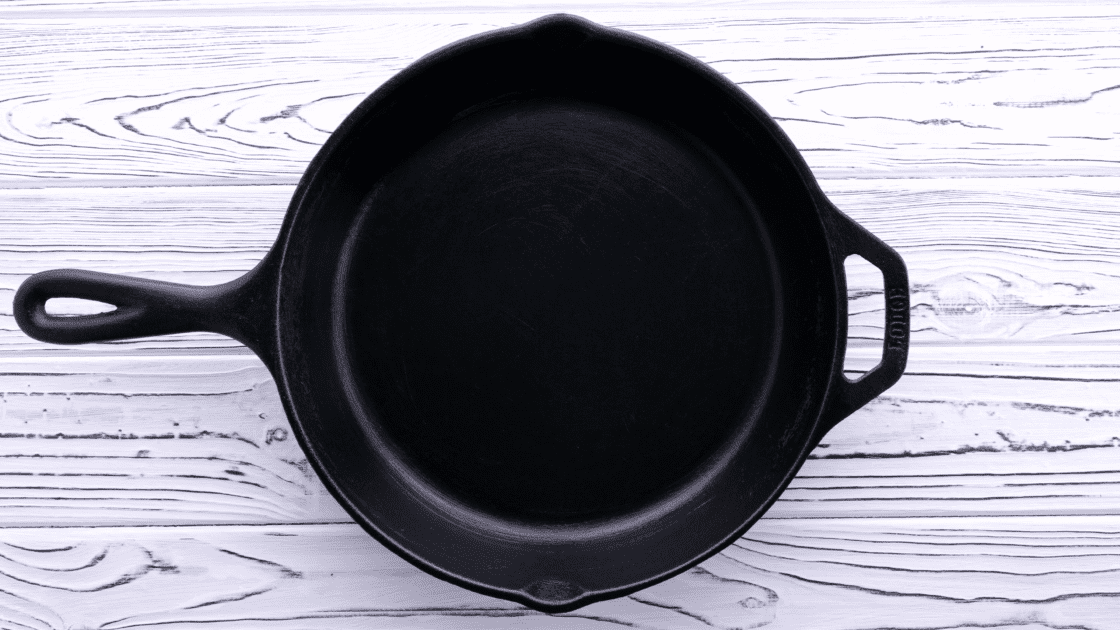
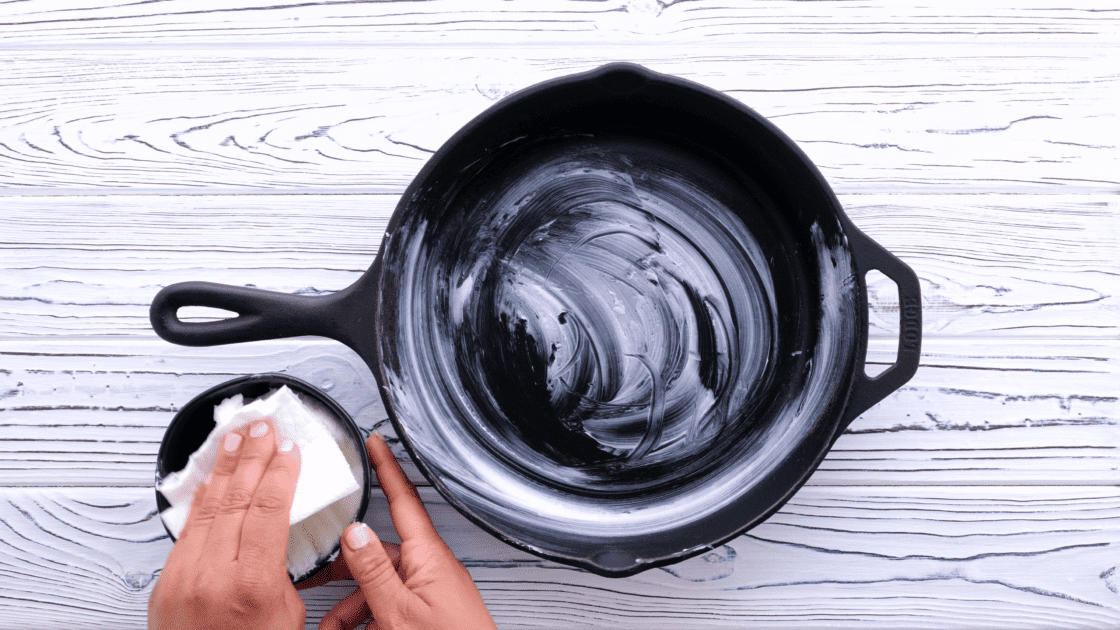
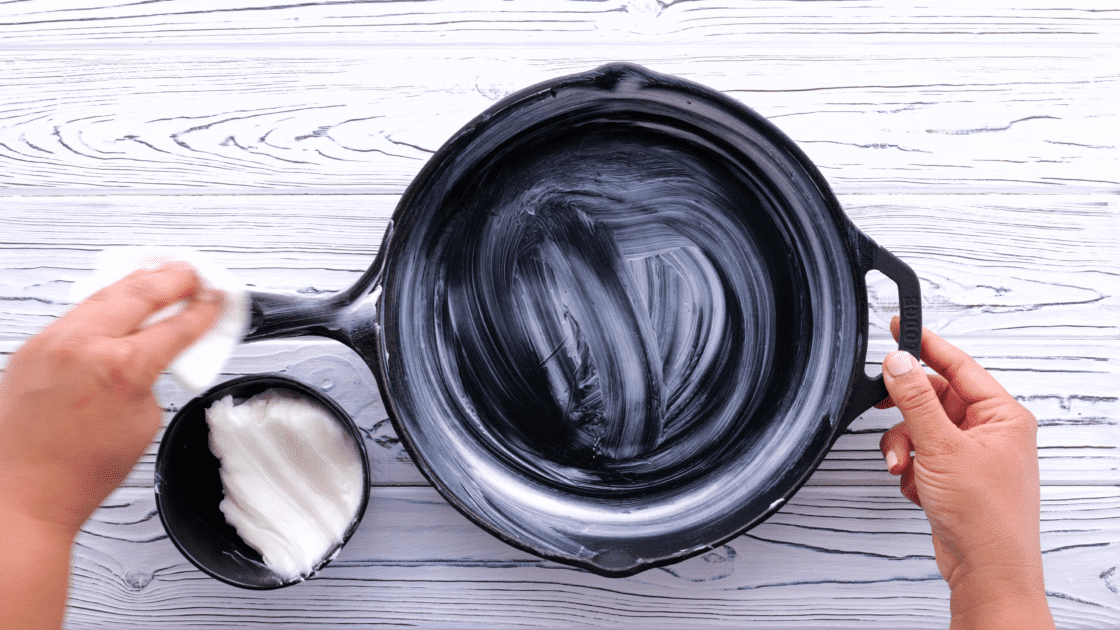
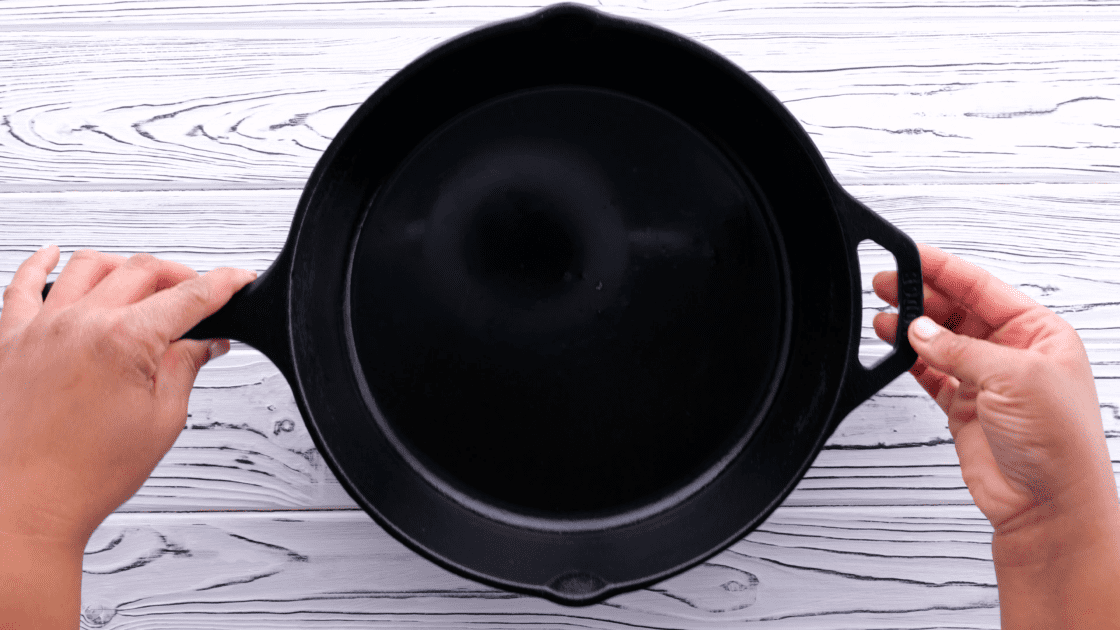

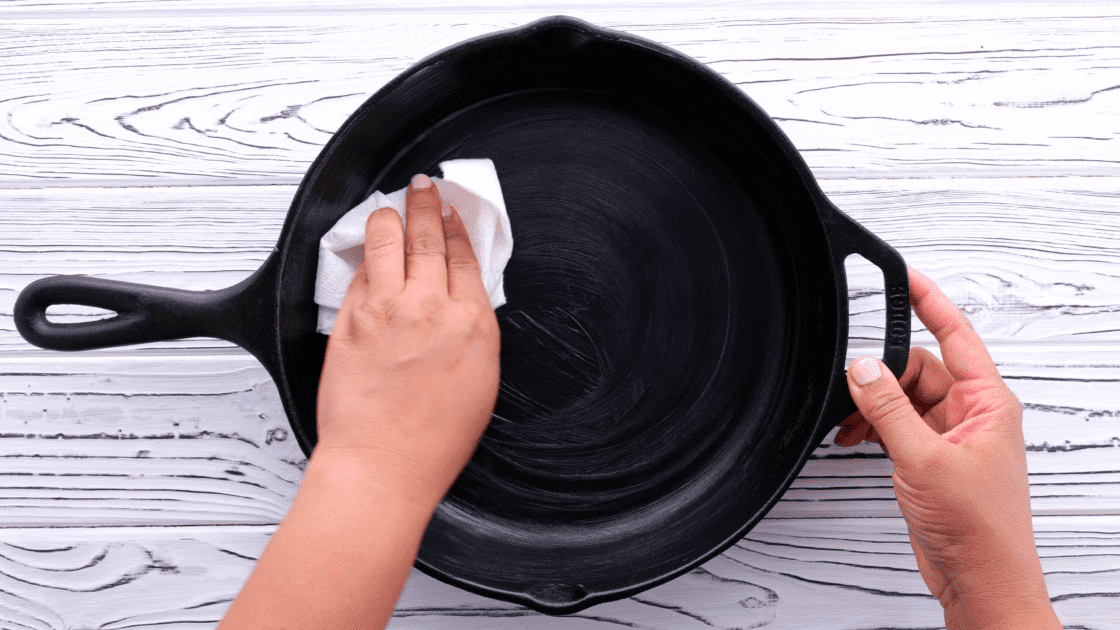


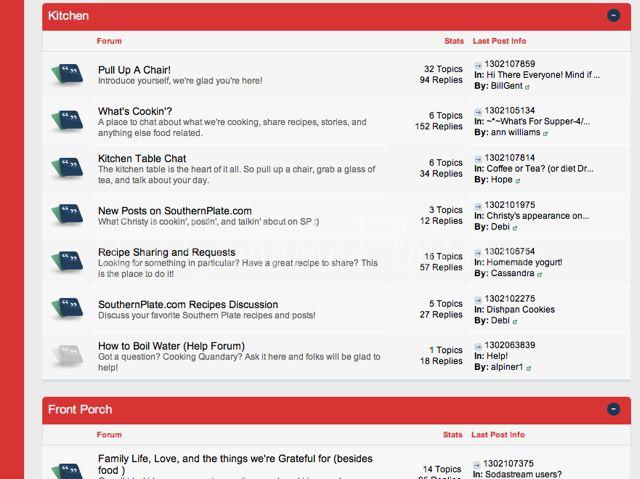
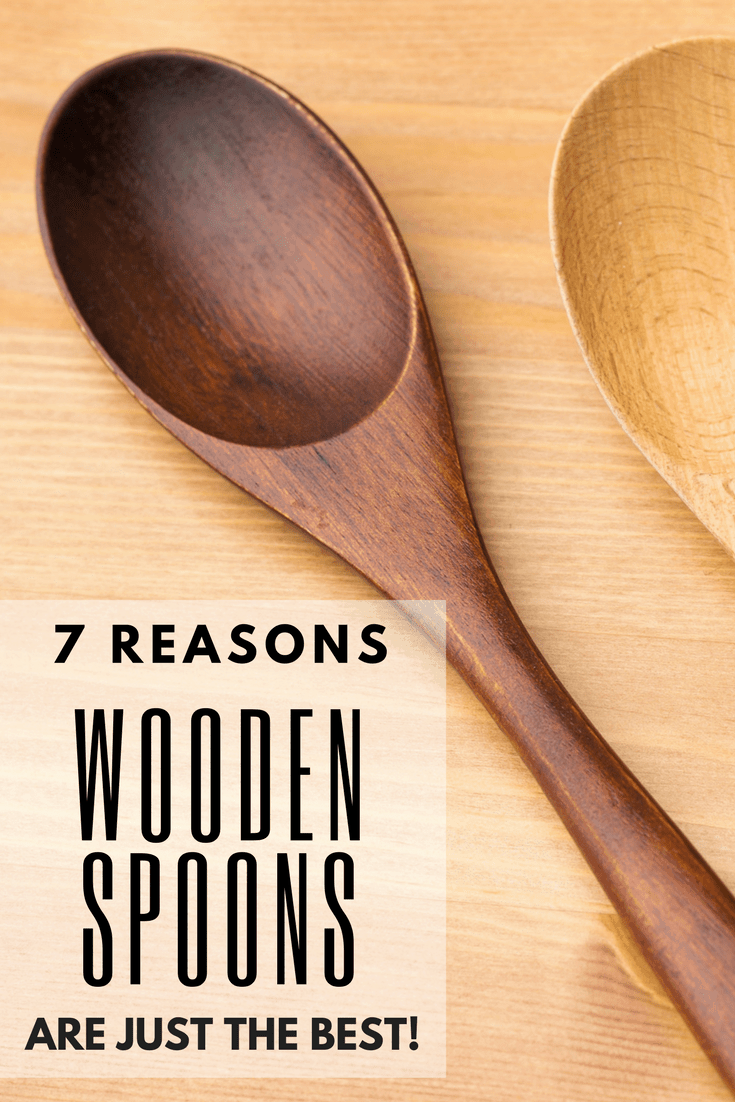


I received a new iron skillet for Christmas this year …. can’t say how much this article cleared up the ‘how do I season my new skillet’ question! Happy new year.
I am so glad you found it too!! You are going to LOVE the skillet!
I am blessed with 2 very well used 6 inch skillets. The trick to frying an egg is use plenty of butter or bacon grease and make sure the pan is hot before you put the egg inn.
Frying an egg…yes butter works great even a little cooking oil…I use olive oil….butter sometimes burns…. You know when the pan is ready when water drops or good ol’ spit “dances” on the surface…crack that egg….a little practice it will be perfect every time.
Good ol’ WHAT??? EEEEEEYEEEEEWWWWWWWWWWWWWWW!!!!
(OTOH, I guess a skillet that hot sterilizes anything that touches it. Yes. I choose to believe that. Just as soon as I expunge this image from every neuron I posess.)
I mean “possess.” Ssorrrrryyyy.
This is Jennifer’s husband, Jason. A while back we came across an article, I think it was from a story in Cook’s Country, about a lady who was seasoning her cast iron with flaxseed oil. Rather than get into the hows and whys, I’ll just let you read the article for yourself.
http://sherylcanter.com/wordpress/2010/01/a-science-based-technique-for-seasoning-cast-iron/
I just bought a cast iron skillet at flea market. Excellent condition. I looked at internet and watched a video on how to do it. Didnt have Canola Oil like lady suggested but had Vegetable oil so used generous amount like she said and turned it upside down on cookie sheet to catch excess oil like she said. Put it in oven at 250 degrees for 2 hrs. My skillet is splotchy and sticky. It looks ruined. What went wrong and how do I fix it.
enjoyed the anecdote about the SOS pads;when i was seven years old i did the same thing for essentially the same reason; i had seen antimated SOS commericals on our black and white TV so the skillets before using an SOS pad were black and afterward were not black; then they would show actual film of a shinny aluminum skillet. I scubbed and scubbed and finally got one of them to be a dull gray; don’t remember my mom being mad; when i told her what i was trying to acomplish she did tell me that SOS pads couldn’t turn cast iron into aluminum.
I’m getting ready to move out my parents house soon & I’ve been shopping for years for things for my new home. My mom has always been scared of cast iron skillets. Her bestfriend wanted to kill me when I was a kid after scrubing HER NASTY POTS clean. But I always remembered her food tasted so good. But when I was done with the pots everything tasted like soap 8(
Reading this post makes me feel like I can seasoned some skillets so 1st thing tomorrow off to the store to buy me a set!
I also have trouble with scrambled eggs. What’s the trick there? Fried eggs, however…I chase them around the skillet! So I assumed the seasoning was good.
Bear in mind that I only recently got into the seasoning routine but I was surprised that lard is being used. I use veggy oil. I recently noticed an off putting smell upon heating the skillet. It affected the tase of the food as well. I wouldn’t exactly call it rotten but it’s not right. I see now that veggy oil can become rancid. I’m blown away that lard does not become rancid. Does anyone have an Alton Brown-esque, scientific explanation?